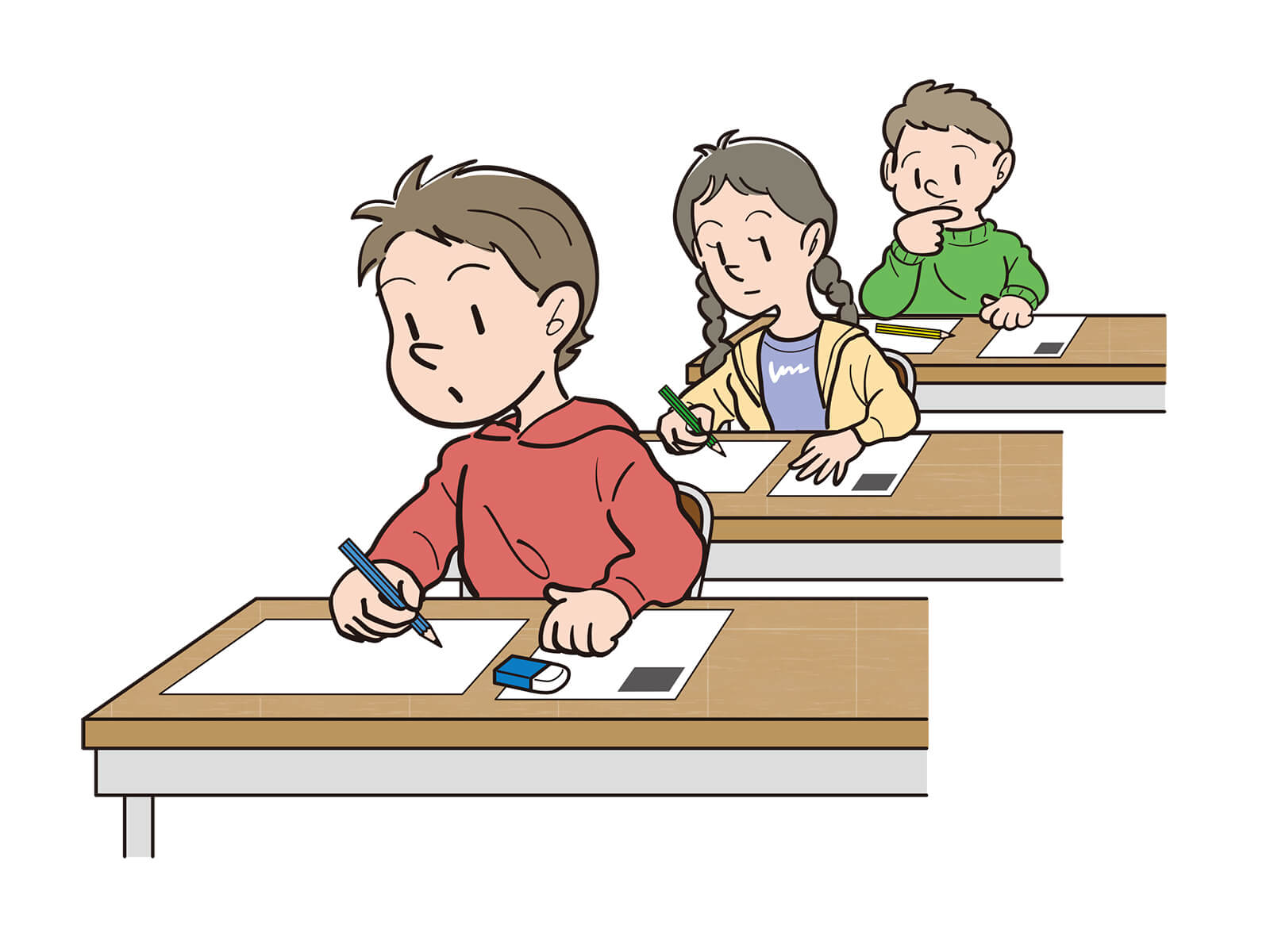Definition
All the three words such as 児童(じどう), 生徒(せいと)and 学生(がくせい)mean ‘student’.
However, they are clearly different by law.
- 児童(じどう):students at primary school (Grade 1 to 6)
- 生徒(せいと):students at junior high school and high school (Year 7 to 12)
- 学生(がくせい):students at university

がんばる子
Not many people care about the difference in a daily conversation.
学生 could be sometimes high school students.
生徒 could be primary school kids.

Primary school students are speaking.

A high school student is smiling.

A university student is reading a book.
Fixed expression
There are some fixed expressions.
For example, 学生生活(がくせいせいかつ)which means ‘student life’ or school life.
学生生活 can be for junior high school up to university.
You never say 生徒生活 even though 学生 and 生徒 are similar words.

せんせい
Use 学校生活(がっこうせいかつ)for primary school.
Fixed expressions with 生徒
- 生徒会(せいとかい):SRC
- 生徒手帳(せいとてちょう):student handbook
Fixed expressions with 学生
- 学生生活(がくせいせいかつ):student life or school life
- 学生時代(がくせいじだい):student days or school days
- 学生寮(がくせいりょう):dormitory
- 学生運動(がくせいうんどう):student protest
- 学生証(がくせいしょう):student ID
